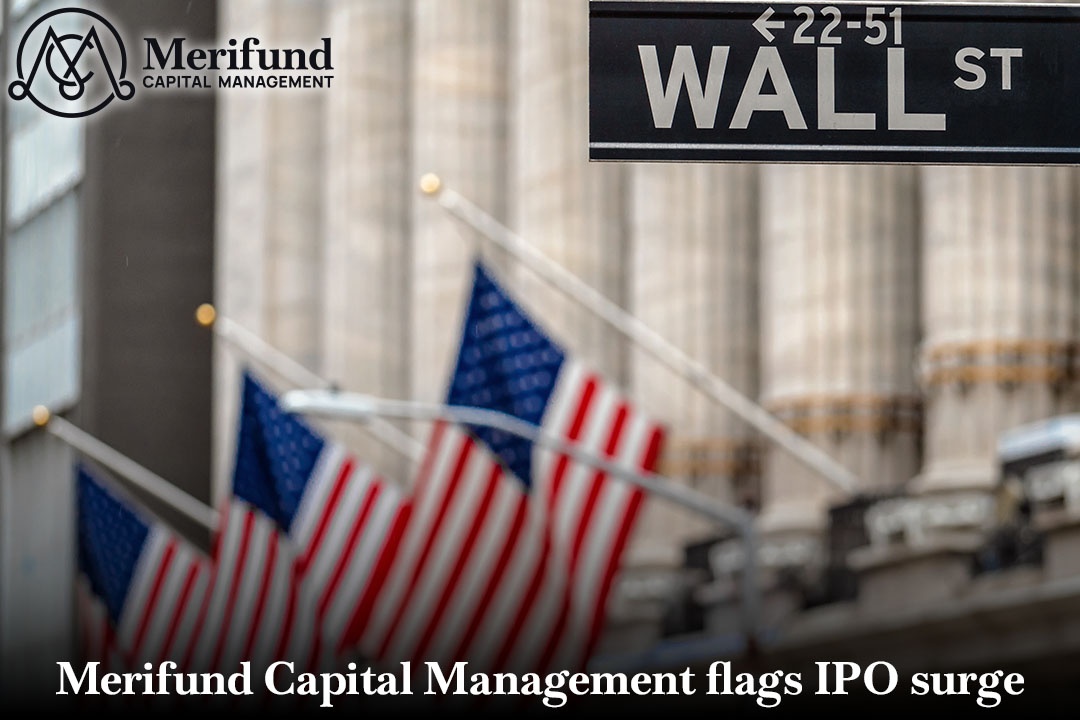Merifund Capital Management views the current wave of initial public offerings as a turning point for global markets, with activity strengthening through the summer months and investor discipline sharpening around issuers with sustainable economics. August alone records twelve listings worth about $3.2 billion, almost twice the August average of the past decade, while July brought twenty-nine transactions raising nearly $5.8 billion. Equity indices reinforce the backdrop, with the Nasdaq Composite and S&P 500 both reaching new highs this month.
Large investment banks confirm the trend. Equity underwriting revenue at one leading Wall Street house rises 42% from the previous quarter to $558.2 million, while another reports investment banking fees of $2.3 billion, up 24% over the same period, with equity underwriting within that total growing by 98%. Developed markets count thirty-six technology IPOs by the end of June, raising more than $7.1 billion, already above the $6.9 billion total across all of 2024.
“Investor allocations this year concentrate on issuers with recurring revenues, strong unit economics and governance frameworks that withstand scrutiny,” notes Anthony Saunders, Director of Private Equity at Merifund Capital Management. “Our analysis of the year to date shows selectivity is now decisive, with software, fintech and digital assets leading order books where operational scale and cash conversion are demonstrable.”
High-profile debuts illustrate the scale of demand. In July 2025, Figma records a 250% first-day gain, opening at $36.84 and closing at $128.95, implying a fully diluted value of $53.5 billion. Its annual revenues of $836.2 million are up 48% over the preceding 12-month period, with a quarterly profit of $50.3 million further supporting investor appetite. Circle’s June offering follows a similar trajectory, closing 168% higher on day one and sustaining gains of about 400% above its IPO reference, underpinned by quarterly revenue growth of 53% to $734.61 million and USDC circulation rising 90% year-on-year. Bullish, the cryptocurrency exchange backed by Peter Thiel, prices at $41.31, peaks above $131.74 on its first day and settles near $103.38, equating to a valuation close to $14.7 billion against its $6.0 billion IPO reference, after handling $279.1 billion of trading volume during 2024.
Saunders interprets such moves less as anomalies than as signals that pricing dynamics are normalising. “Order books in the third quarter are clearing at narrower discounts, with quality growth securing sponsorship while cash-burning models encounter resistance,” he comments. “Where gross margins, governance and customer retention meet higher thresholds, we expect participation to remain broad through the second half, provided volatility continues to ease.”
Pipeline data support the constructive stance. As of late August 2025, there are about 168 active U.S. filings, with potential aggregate raises approaching $7 billion. Thirteen larger candidates target at least $111.6 million each. High-profile issuers include Klarna, exploring valuations near $22.3 billion following prior swings between $51.4 billion and $7.8 billion, and Databricks, tracked at $69.2 billion following an $11.2 billion December funding round.
Policy contours remain important. The Securities and Exchange Commission under acting Chairman Mark T. Uyeda is emphasising disclosure proportionality and lighter burdens for growth issuers. Exchanges are in dialogue with regulators over listing frictions that have discouraged companies in the past. Saunders cautions, however, that “regulatory adjustments may encourage activity, but issuers must still prove that business models deliver durable returns across cycles.”
Investor participation continues to split between retail and institutional dynamics. Retail enthusiasm is capable of inflating day-one valuations, while institutions increasingly target issuers with free cash flow visibility, revenue above $250 million and gross margins above 70%. “Dispersion is widening,” Saunders observes. “Our research shows institutional sponsorship focuses on profitability, not simply growth at all costs.”
For investors, the message is clear: opportunities are real but uneven. Merifund Capital Management’s analysis highlights that developed markets have already exceeded last year’s total technology IPO proceeds by June, and the outlook suggests momentum continues into the autumn window. Companies with proven scalability and resilient fundamentals are commanding sustained attention, while those with weaker models struggle to secure meaningful sponsorship.
About Merifund Capital Management
Based in Singapore since 2010, Merifund Capital Management Pte. Ltd. is a specialist hedge fund manager with a global perspective on investment opportunities. The firm manages a diversified set of strategies spanning traditional long-only portfolios, long/short equity, global macro, event-driven and systematic trading. Derivatives are deployed selectively to optimise exposure while ensuring capital preservation, liquidity and rigorous risk controls remain at the core. Environmental, social and governance principles are embedded into its processes in line with international standards. Merifund serves accredited investors, family offices, foundations and endowments, and is progressing towards making certain offerings available to retail investors.
For general information, visit merifund.com. Additional insights can be found at merifund.com/insights.
Media Contact
Tao Yang
media@merifund.com


